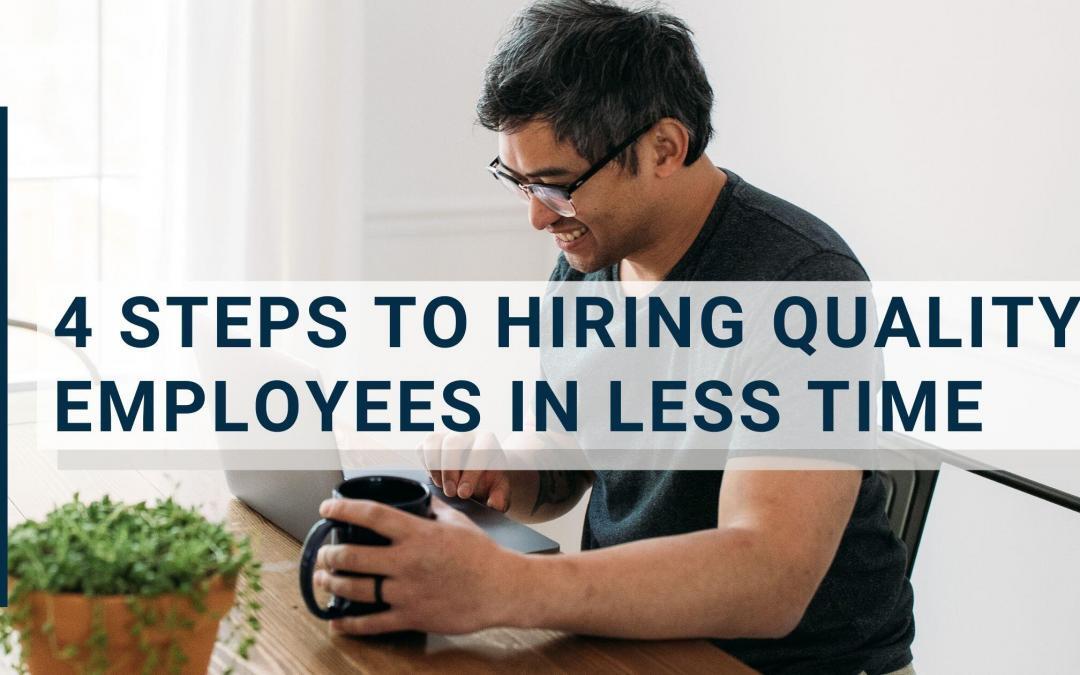How to Hire Quality Employees
Hiring quality employees for a job can save hundreds of thousands of dollars. When hiring new employees, there is a correct way to approach the process. Errors in hiring decisions consume lots of time and money and have a much bigger impact on a company’s bottom line than anyone ever considers.
Often times it is said these poor decisions are “simply a cost of doing business.” However, the better way to hire quality individuals requires a well-thought out plan, yet quick and easy to execute. This in turn contributes to companies finding and hiring quality employees as well as saving time and shortening the hiring cycle.
So, to help you make better hiring decisions more quickly, here are the:
1. Streamline Your Hiring Process
An effective process would be to have the entire hiring cycle managed by a single point of contact (usually within your recruitment team). This person should be responsible for reviewing and qualifying the high potential candidates, looking for additional internal talent, and also managing the external search process. In most cases, this approach would cut the hiring cycle time at least in half. Simplifying the process by having a specific hiring manager will lower the risk of miscommunication and restrict missing out on quality candidates.
2. Build a Virtual Bench
Passive job seekers are an inventory of possible candidates which can sometimes fill a sudden demand of open positions. As they are not active job seekers, they will not be present on any conventional job boards. A recruiter can build and maintain their talent pool by networking with passive candidates with diversified backgrounds and experiences.
Networking makes it easier to make your job postings viral which increases both reach and visibility. An employee referral program can also be a method of recruiting passive candidates, because they reach out to their friends first. It is also a great tool for getting active candidates who often ask their friends for referrals, as well as for passive candidates who may be swayed by their friends. Make your employee referral program social so it’s easier for your employees to find and refer great candidates to you.
3. Relationship Recruiting
Relationship recruiting is about building lasting relationships with prospects. And if you want to break through to the next level of candidate pipelining to create a true talent community, you must find a way to engage your members so they develop a sense of trust and willingness to connect with you. Build a community, drive conversation through meaningful content & provide a better candidate experience.
The use of video and interactivity also provides something candidates are looking for – an engaging experience where they have access to “good, relevant information” quickly and easily. Structured video-based online simulations and interviews are quickly becoming a quality way to begin the relationship with a candidate earlier in the recruiting process.
4. Use Your Time Wisely
Time is a hot commodity, so why not focus only on hiring quality employees? There are several pre-screening tools in the marketplace today to help with this process but first you will need to determine what this “top-performer” looks like (according to your organizational needs.) Many pre-screening tools use filters to help scale down hundreds of online applications to a manageable short list based on skills, experience level, and much more.
A pre-employment screening tool should also test applicants on technical, interpersonal skills and industry expertise. But at the same time make sure your pre-screening tool keeps your high potential applicants engaged so they make it through your entire process. This process saves a lot of time spent in the hiring process while actively engaging top-performers.
Hiring for quality is different than hiring for quantity and provides much more value than the latter. A well thought out plan executed properly, can guarantee maximum quality in much less time as well as lower employee turnover in the long run.
Related Resource: Pre-employment assessments: Everything you need to know
Related Blog Post: Fix your job application process to fill your open positions

 Dr. Jaffee (M.A., Ph.D.) is a recognized expert in the field of assessments, and has created effective HR Solutions used by millions of people.
Dr. Jaffee (M.A., Ph.D.) is a recognized expert in the field of assessments, and has created effective HR Solutions used by millions of people.